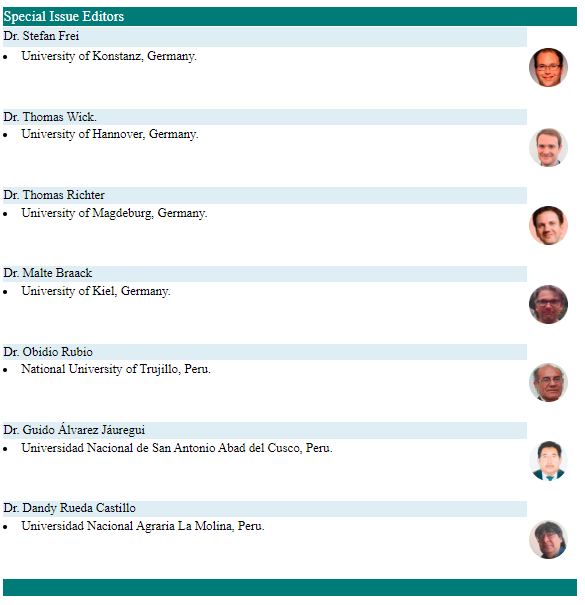Optimal Control For Malaria Epidemic Model With Vaccinating, Human Treatment And Mosquitos Spraying
DOI:
https://doi.org/10.17268/sel.mat.2019.02.05Palavras-chave:
Malaria epidemic model, Stability, Equilibrium point, Control optimalResumo
In this paper we study the effect of vaccination control, medical treatment and spraying to malaria epidemic model.
Firstly the non-control malaria epidemic model is generated and the equilibrium point is determined. Afterward, the stability of equilibrium point in previous model is investigated. The research is continued by deciding the optimal control of malaria epidemic model and minimizing the cost. The results show that the control effect can reduce the subpopulation of infected human and mosquitoes.Referências
Bazaraa, M. S. dan Shetty, C. M., Nonlinear Programming. John Wiley & Sons, Inc, 1993.
Bradie, B. A Friendly Introduction to Numerical Analysis, Prentice Hall, New Jersey, USA, 2006.
Chiang, Alpha Fundamental Methods of Mathematical Economics, McGraw-Hill, New York, USA, 1927.
Chiang, Alpha Elements of Dynamic Optimization, McGraw-Hill, New York, USA, 992.
Chitnis, N., Cushing, J. M., & Hyman, J. M. Bifurcation analysis of a mathematical model for malaria transmission. SIAM Journal on Applied Mathematics, 2006; 67(1):24-45.
Chong, E. K. P. and Zak, S. H. An Introduction to Optimization, John Wiley and Sons, Inc. 1996.
Ceuser, W and Smith, B, Malaria Diagnosis and the Plasmodium Life Nature Procedings, 2009: doi:10.1038/npre.2009.3960.1, New York. : Posted 7 Nov 2009.
Diekmann, O. and Heesterberk, J.A.P. Mathematical Epidemiology of Infectious Diseases: Model Building, Analysis and Interpretation, John Wiley and Sons, Chichester, 2000.
FosterWA,Walker ED. Mosquitoes (Culicidae). In Mullen G, Durden L, eds, Medical and Veterinary Entomology, Academic Press, San Deigo, 2002.
Macdonald, G. The epidemiology and control of malaria, Oxford UniversityPress, London, 1957.
Gopal, M. Modern Control System Theory, Wiley Eastern Limited, New Delhi, 1984.
Gilles, HM Peter, F.B. Rationale and Technique of malaria control.: Essential Malariology, Arnold, Oxford University Press, New York, 2002.
Yang, H. M. Malaria transmission model for different levels of acquired immunity and temperature-dependent parameters (vector), Revista de Saude Publica, ,2000; 34:223-231.
Harijanto PN. Malaria: Epidemiologi, Patogenesis, Manifestasi Klinis dan penanganannya, EGC, Jakarta, 2000.
Khalil, H.K. Nonlinear Systems ,3rd edition, Prentice Hall, New Jersey , USA, 2002.
Koella, J. C. On the use of mathematical models of malaria transmission, Acta Tropica, 1991; 49:1–25.
Kemenkes RI. Profil Kesehatan Indonesia 2010, Kementrian Kesehatan Republik Indonesia, Jakarta, 2011.
Makinde, O.D., Okosun, K.O. Impact of chemo-theraphy on optimal control of malaria disease with infected immigrants. Biosystems, 2011; 104:32 – 41.
Mital, K.V. Optimization Methods in Operation Research and Systems Analysis, Wiley Eastern Limited, New Delhi, 1984.
Nedelman, J. Introductory review: Some new thoughts about some old malaria models, J. Math .Biosci. , 1985; 73:159–182.
Olsder, G.J. Mathematical Systems Theory, Delftse Uitgevers Maatschappij, CW Delft, Netherlands, 1994.
Okosun, K.O. Optimal Control Analysis of a malaria disease transmission model that includes treatment and vaccination with maning immunity. Biosystems, 2011; 106:136 – 145.
Perko, S. Differential Equations and Dynamical Systems, Texts in Applied Mathematics, Springer–Verlag, USA, 1991.
Ross, R. The prevention of malaria, John Murray, London,1911.
Rinidar dan Mawengkang, M. Modeling the dynamics of malaria-mosquito-human interactions as a way to control the outbreak, Proceeding. International Conference on Environmental research and technology (ICERT), Penang, Malaysia, 2008.
Syaifudin, dkk. Pengembangan Vaksin Malaria dengan Radiasi Pengion, Prosiding Seminar Nasional Sains dan Teknologi-II, Universitas Lampung, 2008.
Sachs, J. D. A new infected global effort to control malaria. Science, 2002: 298:122–124.
Townson, The Anopheles Vector: Essential Malariology. Arnold Oxford University Press, New York, 2002.
Thome, C.A. R., Yang, M. H., Esteva, L. Optimal Control of Aedes aegypti mosquitoes by the sterile insect technique and insecticide,J. Mathematical Bioscience, 2010; 223:12 – 23.
Tu, Pierre, N.V. Dynamical System :An intoduction with application in Economis and Biology, Springer – Verlag , New-York, USA, 1994.
Van den Driessche, P., dan Watmough, J. Reproduction numbers and sub-threshold endemic equilibria for comparmental models of disease transmission. J. Mathematical Biosciences, 2002; 180:29 – 48.
Verhulst, F. Nonlinear Differential Equations and Dynamical Systems, Springer –Verlag, New- York, USA, 1990.
WHO. World Report malaria, World Health Organization, Geneva, 2009.
Downloads
Publicado
Como Citar
Edição
Seção
Licença
Os autores que publicam nesta revista aceitam as seguintes condições:
Os autores mantêm os direitos autorais e atribuem à revista o direito da primeira publicação, com o trabalho registrado com a licença de atribuição Creative Commons Atribución 4.0 Internacional (CC BY 4.0), que permite que terceiros usem o material publicado sempre que mencionarem a autoria do trabalho e os direitos autorais. Primeira publicação nesta revista.
Os autores podem fazer outros acordos contratuais independentes e adicionais para a distribuição não exclusiva da versão do artigo publicada nesta revista (por exemplo, incluí-la em um repositório institucional ou publicá-la em um livro), desde que afirme claramente que o trabalho Foi publicado nesta revista.
É permitido e recomendado aos autores que publiquem seus trabalhos na Internet (por exemplo, em páginas institucionais ou pessoais) antes e durante o processo de revisão e publicação, pois isso pode levar a trocas produtivas e a uma disseminação maior e mais rápida do trabalho. publicado (Consultar: efeito do acesso aberto).












